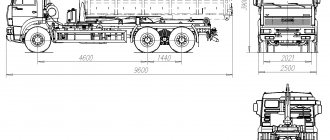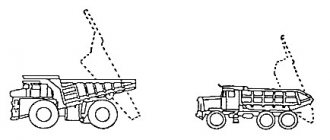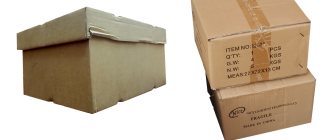Any used vehicle must, for further sale and use, obtain a special permit - SBCTS. Without which it is impossible to import, operate or deregister any such wheeled vehicle on the territory of the Russian Federation, Belarus, Kazakhstan and Armenia. This document is evidence that the design of a wheeled vehicle is completely safe for further use and does not pose a danger to the owner.
The law, which today fully regulates the receipt of such permits on the territory of the Eurasian Economic Union (EAEU), came into force on January 1, 2015. Its wording is as follows: Decision of the Customs Union Commission dated December 9, 2011 N 877 (as amended on December 2, 2014) “TR CU 018/2011. Technical regulations of the Customs Union. On the safety of wheeled vehicles." It is in accordance with this document that permits for the production and circulation of transport are now issued. In particular, the certificate of sbkts.
Categories of vehicles that are required to obtain this permit
One of the main concepts that is encountered when applying for a permit is “Single vehicle”. It means transport that was produced on the territory of the Customs Union and is imported into its territory by a private person for his needs. He must also be over 3 years old. Who can obtain a vehicle design safety certificate? This list includes the following categories of vehicles:
- Cars
- Passenger transport: buses, trolleybuses, specialized vehicles
- Trucks, semi-trailers and trailers for various types of vehicles
- ATVs
- Motorized transport: motorcycles, scooters, mokiks, tricycles, motorbikes, mopeds
Ministry of Revenue and Duties
APPROVED by the Order of the Ministry of Revenue and Duties of the Donetsk People's Republic dated April 16, 2018. No. 145
The procedure for issuing a Certificate of Approval of a vehicle of international transportation for the carriage of goods under customs stamps and seals
I. General provisions
1.1. This Procedure regulates the legal relations associated with the voluntary identification of a vehicle for international transportation (motor vehicle, trailer, semi-trailer) upon admission to the transportation of goods under customs seals, as well as the sequence of actions of officials for issuing a Certificate of Admission of a vehicle for international transportation to transportation of goods under customs seals (hereinafter referred to as the Certificate).
The execution and availability of a Certificate is not a prerequisite for the transportation of goods under customs seals and seals.
1.2. This Procedure applies to legal entities and individual entrepreneurs carrying out international transportation using vehicles owned or used by them (hereinafter referred to as vehicle owners, interested parties) who have submitted an application for the issuance of a Certificate in accordance with the procedure established by this Procedure .
1.3. To transport goods under customs seals, vehicles for international transportation must be designed and equipped in compliance with the Technical Requirements for vehicles required for approval to transport goods under customs seals (hereinafter referred to as the Technical Requirements) (Appendix 1).
1.4. The certificate is issued by the customs authority upon a written application from the interested person.
The certificate remains valid as long as there are no changes in the design of the vehicle for international transport, but not more than two years from the date of its issue to the interested person.
The certificate remains valid when the ownership of the vehicle is transferred to another person.
1.5. The certificate is issued only for vehicles whose cargo compartments comply with the Technical Requirements.
For vehicles that transport large, heavy cargo, containers, etc., a Certificate is not issued.
1.6. The certificate is issued in one copy and, after registration, is issued to the owner of the vehicle or an authorized person. The form of the Certificate is given in Appendix 2 to this Procedure. The certificate is registered and issued by the customs authority to the interested person within five working days from the date of provision of the full package of documents and presentation of the vehicle for inspection.
1.7. Inspection of the vehicle is carried out at delivery points with permanent customs control zones by authorized customs officials. By decision of the head of the customs authority or a person authorized by him, an inspection of a vehicle may be carried out on the territory of the enterprise or in the place specified in the application of the owner of the vehicle (authorized person) in the following cases:
1) registration of a significant number of vehicles (more than 5);
2) a significant distance between the parking lot of the vehicle and the location of the customs authority issuing the Certificate;
3) the impossibility of delivering the vehicle to the place of delivery with a permanent customs control zone, due to technical limitations (related to dimensions, etc.).
1.8. The accounting of issued (extended) Certificates is maintained by the issuing customs authority using the electronic Logbook of Certificates of approval of a vehicle of international transportation for the carriage of goods under customs seals (hereinafter referred to as the electronic Logbook), generated by the software of the revenue and duties authorities in the form given in the Appendix 3.
1.9. If the owner of the vehicle loses the Certificate, a duplicate Certificate will not be issued. The owner of the vehicle or a person authorized by him informs the customs authority, applies to the customs authority in order to undergo a new procedure for admitting the vehicle to transport goods under customs seals, in the manner prescribed by Section III of this Procedure.
1.10. If the basic and design characteristics of a vehicle for international transport have been changed, then the Certificate of this vehicle becomes invalid. Such a vehicle is subject to the procedure for new approval of the vehicle for the transportation of goods under customs seals, in the manner prescribed by Section III of this Procedure. This information is recorded in the electronic Journal.
1.11. The original Certificate must accompany the vehicle.
1.12. The owner of the vehicle is obliged to ensure the safety of the Certificate.
1.13. The Certificate is valid for 2 years from the date of its issuance. Within three months before the end of this period, the vehicle may be presented to the customs authority that issued the Certificate for identification, in order to extend the validity of the Certificate, in the manner prescribed by Section IV of this Procedure.
If the owner or authorized person within three months before the expiration date of the Certificate has not applied to the customs authority to extend its validity, the vehicle is subject to a new approval for the transportation of goods under customs seals, in the manner prescribed by Section III of this Procedure .
1.14. A completed Vehicle Certificate and a set of photographs submitted to the customs authority to obtain or extend the validity of the Certificate are issued to the applicant against signature on the back of the application provided by the interested party.
II. Filling out the Certificate of Approval of a vehicle for international transportation for the carriage of goods under customs seals
2.1. The Certificate form is printed in Russian, on a white sheet of A3 format.
2.2. The Certificate is accompanied by photographs of the vehicle, which are certified by an authorized person of the issuing customs authority by affixing stamps of the LNP, with the personal signature of the official who conducted the customs inspection of the vehicle.
2.3. All entries in the Certificate are made by the applicant in printed form in Russian, except for the columns that are filled in by an authorized person of the issuing customs authority (columns 5 – 12).
2.4. Procedure for filling out the Certificate:
2.4.1. Section "Identification":
2.4.1.1. the applicant enters the vehicle license plate in column 1;
2.4.1.2. in column 2 the applicant enters the type of vehicle;
2.4.1.3. in column 3 the applicant enters the vehicle chassis number;
2.4.1.4. in column 4 the applicant enters the brand of the vehicle (or the name of the manufacturer);
2.4.1.5. In column 5, the official of the issuing customs authority enters official records. In cases where to ensure compliance with the Technical Requirements it is necessary to apply a large number of customs seals, such a number of seals must be indicated in column 5 of the Certificate and, if necessary, a diagram of the placement of customs seals may also be attached to the Certificate;
2.4.1.6. in column 6, the official of the issuing customs authority enters the number of attachments (photos of the vehicle) to the Certificate;
2.4.2. In column 7 of the “Approval” section, the official of the issuing customs authority determines the validity period of the Certificate, indicates the type of approval (individual or by type of design) by entering a cross sign “ × ” in the appropriate cell, the city of registration, and the date of registration. The information entered in the section is certified by the personal signature and stamp of the LNP of the official who conducted the customs inspection of the vehicle.
2.4.3. In column 8 of the “Owner” section, the official of the issuing customs authority enters the name (full name) and location (city of registration) of the owner in the case when a Certificate is issued for a vehicle that is not subject to registration.
2.4.4. In column 9 of the “Extension” section, the official of the issuing customs authority enters the data necessary to extend the validity of the Certificate. The information entered in the section is certified by the personal signature and stamp of the LNP of the official who conducted the customs inspection of the vehicle.
2.4.5. Notes section:
2.4.5.1. in column 10, the customs authority official indicates the malfunctions identified during the customs inspection of the vehicle, indicates the name of the customs post or checkpoint (control point), the entry is certified by a signature and a stamp of the LNP is affixed;
2.4.5.2. in column 11, the official of the issuing customs authority enters information about the elimination of faults specified in column 10.
III. Issuance of a Certificate of Approval of a vehicle for international transportation for the carriage of goods under customs seals
3.1. To carry out voluntary identification of a vehicle and issue a Certificate, the owner of the vehicle or a person authorized by him submits the following documents to the customs authority:
1) a written application of any form, which indicates the type of vehicle, its identification data, state registration numbers, and other information that can be used to make a decision on approval;
2) completed Certificate;
3) certified copies of the vehicle registration certificate with the traffic police of the Ministry of Internal Affairs of the Donetsk People's Republic, copies of documents confirming the right to use the vehicle (if the application is not the owner of the vehicle), a copy of the document confirming the payment of transport tax for this vehicle for the current year. Upon receipt of the Certificate, the applicant presents the originals of such documents to the customs authority;
4) a set of photographs of the vehicle (front view, rear view, view from each side, enlarged plan of the place where customs stamps and seals were applied). Images must be clear and provide complete information about the vehicle. Photos on the back must contain information about the vehicle (license plate, type, make, vehicle chassis number). This information is certified by the signature of the vehicle owner and seal (if available).
3.1.1. If the documents for issuing the Certificate are submitted by an authorized person, a passport and a supporting document (power of attorney, agreement) must be additionally presented.
3.1.2. If a temporary registration card for a vehicle is provided, the validity of the Certificate is limited to the validity period of the card, but not more than 2 years. When providing an agreement as a document confirming the right to use this vehicle, the validity of the Certificate is limited to the duration of the agreement, but not more than 2 years.
3.2. Official of the issuing customs authority:
1) checks the correctness of filling out the Certificate and the accuracy of the information included in the Certificate, checks copies of the provided documents with the originals;
2) inspects the vehicle for compliance with the Technical Requirements for vehicles required for approval for the transportation of goods under customs seals (Appendix 1), as well as the identity of the appearance of the vehicle with the photographs provided;
3) in the absence of comments, registers the Certificate, affixes stamps of the LNP in the corresponding column of the Certificate and on the back of each photograph, and certifies it with a signature.
3.3. A written application for the issuance of a Certificate and copies of documents attached to it are kept in the files of the issuing customs authority for the period established according to the nomenclature.
3.4. If it is discovered that the cargo compartment of the vehicle does not comply with the Technical Requirements, the customs authority, within five working days, notifies the applicant in writing of the refusal to issue a Certificate, indicating the grounds for the refusal, and returns the original documents.
3.5. When issued, the Certificate is assigned a registration number. The registration number of the Certificate consists of 19 characters and has the following structure:
АААА/ВВВВВВВВВ/СССССС,
where AAAA – four digits of the current year;
ВВВВВВВВВ – code of the issuing customs authority according to the Classifier of customs authorities, separated on both sides by a slash;
СССССС – serial number of the Certificate, which is generated by the software of the revenue and fees authorities automatically in ascending order, the numbering is continuous and starts from one.
IV. Extension of the validity period of the Certificate of approval of a vehicle of international transportation for the carriage of goods under customs stamps and seals
4.1. To extend the validity period of the Certificate, the owner of the vehicle or a person authorized by him submits the following documents to the customs authority:
1) a written application in any form, which indicates the registration number of the Certificate, the validity of which must be extended, the type of vehicle, its identification data, state registration numbers;
2) the original and a copy of the Certificate, the validity of which is subject to renewal;
3) a set of photographs of the vehicle with stamps of the LNP, which were attached to the Certificate when it was issued or extended its validity.
If documents to extend the validity of the Certificate are submitted by an authorized person, a passport and a supporting document (power of attorney, agreement) must be additionally presented.
4.2. Official of the issuing customs authority:
1) carries out the actions provided for in clause 3.2 of this Procedure;
2) if there are no comments, fill out column 9 of the “Extension” section of the Certificate, set the validity period of the Certificate, put the LNP stamps in the corresponding column of the Certificate and on the back of each photo, certify with a signature;
3) enters information into the electronic Journal.
4.3. A written application to extend the validity of the Certificate and a copy of the Certificate are kept in the files of the issuing customs authority for the period established according to the nomenclature.
4.4. In the absence of a complete set of documents or changes are made to the design of the cargo compartment of the vehicle, the procedure for re-issuing the Certificate is carried out in accordance with paragraphs 3.1.- 3.5. of this Order.
Deputy Minister - Director of the Department of Customs Affairs
V.V. Pankov
What transport is not subject to SBCTS
Some types of vehicles cannot obtain a certificate of this type. These include:
- Chassis (as well as not complete vehicles)
- Vehicles of categories L, M (1,2,3), N, more than 30 or 50 years have passed since its release, and which has either been restored to its original condition or preserved in its original form.
- Exclusively sports vehicles
- Vehicles that were not intended for use on public roads
- Having a maximum speed of up to 25 km/h
- Transport that is imported briefly into the territory of the Customs Union (up to 6 months) and does not involve alienation, taking into account certain customs regimes
- It is not possible to issue an SBKTS certificate for large-capacity off-road vehicles
- Transport belonging to privileged categories: international organizations, consular and diplomatic missions, their employees, family members of employees
- Vehicles imported as personal property by those individuals who are participants in international and state programs to assist migrants, refugees, etc.
Required package of documents for issuing a certificate
Obtaining vehicle design safety certificates is impossible without certain documents. Their photocopies must be provided to the certification body by the owner of the vehicle without fail. Without them, obtaining a permit will be impossible. Please note that the absence of a particular document may become an obstacle to quickly resolving the issue. This list includes:
- Personal documents of the vehicle owner (passport)
- Confirmation of the right to own a vehicle
- Passport of the car itself
- Confirmation of compliance with a certain environmental class (for example, if you need to issue a certificate for Euro 4)
- TS approval
It is also recommended to add a detailed description of the car or motor vehicle to this list. This is especially true in cases where the original design has been modified.
Documents for customs clearance of a vehicle
Foreign customs authorities issue only documents for travel; the customs clearance procedure itself is carried out in the Russian customs territory.
When importing a car at the border, you must present all available documents required by the customs code:
- title papers;
- bill of sale or invoice;
- customs receipt;
- transit declaration;
- registration card with attachment (declaration TD-7);
- insurance.
In the case of used cars, a conclusion from specialized organizations on the price of the goods will be required; if the car is new, then its value is determined by invoices and papers confirming the purchase.
After conducting a thorough visual inspection of the vehicle and checking all the information specified in the provided papers, customs officers give permission to cross the border. The owner of the car must appear at the customs office where he made the deposit within the prescribed period.
#ADVANTAGE#
Deadlines for registration and authenticity of the BCTS certificate
The processing time for this document in our company is from 2 days. Depending on the type of transport. The cost of the service also depends on this parameter. The validity period of such a certificate is not limited. If you need a certificate of registration for a car, the price of obtaining a document from SERCONS is really low.
You can also always contact us if you have already received a certificate and want to check its authenticity. The document must be registered in the registry. Only then can its receipt be considered legal.
Determination of the HS code and calculations
Semi-trailers can be of different types:
- specialized semi-trailers with refrigerators;
- tanks,
- heavy trucks;
- isometric;
- container ships;
- curtain-awning;
- curtains;
- all-metal vans;
- onboard;
- dump trucks
All of them in the foreign economic activity product nomenclature have their own classification code. Therefore, the import duty for different types of semi-trailers is different.
Trailers and semi-trailers belong to product group 8716. Within this group, the entire variety of semi-trailers is divided into separate items. Semi-trailers are divided not only by type, but also by purpose, capacity, and age. According to the classification code, the amount of duty and VAT is determined. Depending on the type of semi-trailer, the import duty varies.
ATTENTION! We work only with legal entities.
Refrigerated semi-trailers, i.e. equipped with refrigeration units are cleared through customs at the following rates:
| Internal volume, m3 | Age | ||
| up to 3 years | 3–7 years | more than 7 years | |
| at least 76 | Duty 10%+ 20% VAT | Duty 10%+ 20% VAT | Duty 10%, but not less than 28.1 Euro/m3 of the total volume of the refrigerated chamber |
| less than 76 | Duty 15%+ 20% VAT | Duty 15%+ 20% VAT | Duty 15% + 20% VAT |
Tanks used for the transportation of liquid cargo are subject to customs clearance at the following rates:
| Age | Up to 3 years | From 3 to 7 years | More than 7 years |
| Duty amount | Duty 12.5%+ 20% VAT | Duty 12.5%+ 20% VAT | Duty 12.5%+ 20% VAT |
Below is a table showing duty rates for all types of trailers except those listed above.
| Peculiarities | Age | ||
| From 3 years | 3–7 years | More than 7 years | |
| with a total weight of more than 15 tons and an overall length of more than 13.6 m | 9% + 20% VAT | 9% + 20% VAT | 9%, but not less than 13.8 Euro/per ton of gross weight + 20% VAT |
| other semi-trailers (gross weight less than 15 tons or overall length less than 13.6 m) | 10% + 20% VAT | 10% + 20% VAT | 10% + 20% VAT |
All these payments are calculated based on the customs value, which includes the cost of the semi-trailer itself and its transportation. Among other things, a customs clearance fee and an excise duty are payable, since semi-trailers are excisable goods. If everything is clear with duty and VAT, then the cost of the semi-trailer itself is determined based on the TRAILER TAX catalog, which presents models of semi-trailers produced over the last 12 years, or based on the cost of semi-trailers of similar models, if the data is not in the catalog. Information from the Internet may also be used. Ultimately, it depends on the material from which the semi-trailer is made, its weight, capacity, mileage, purposes of use, length of the structure, and the presence of a roof.
There is no recycling fee for semi-trailers.
Semi-trailers are not a preferential product, so the country of origin does not affect the cost of customs clearance. The duties for all exporting countries are the same. But the date of manufacture and the total weight of the semi-trailer are important.
Registration prices
| Type of vehicle | SBCTS: | Deadlines: | Conclusion: | Deadlines: |
| Cars | from 20 000 | from 2 days | from 20 000 | from 3 days |
| Special vehicles and trucks | from 40 000 | from 3 days | from 40 000 | from 4 days |
| Buses and trolleybuses | from 40 000 | from 4 days | from 40 000 | from 5 days |
| Trailers and semi-trailers | from 15 000 | from 4 days | from 15 000 | from 5 days |
| Motorcycles, mopeds, ATVs, scooters | from 15 000 | from 2 days |



